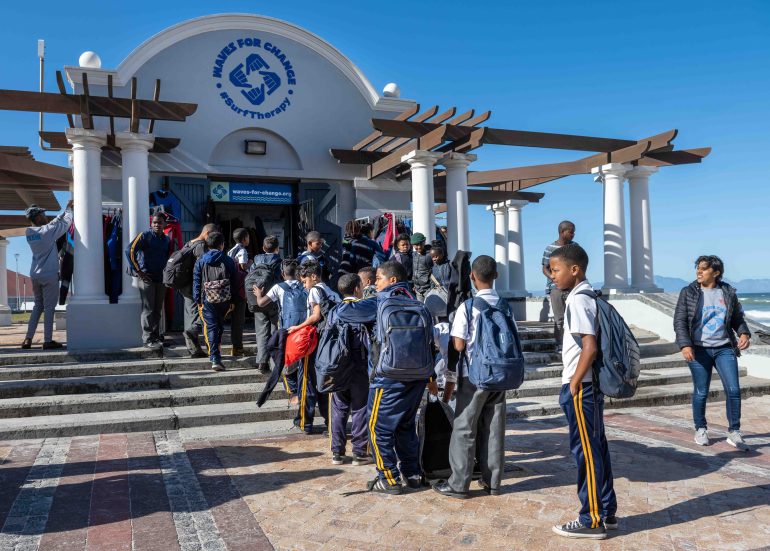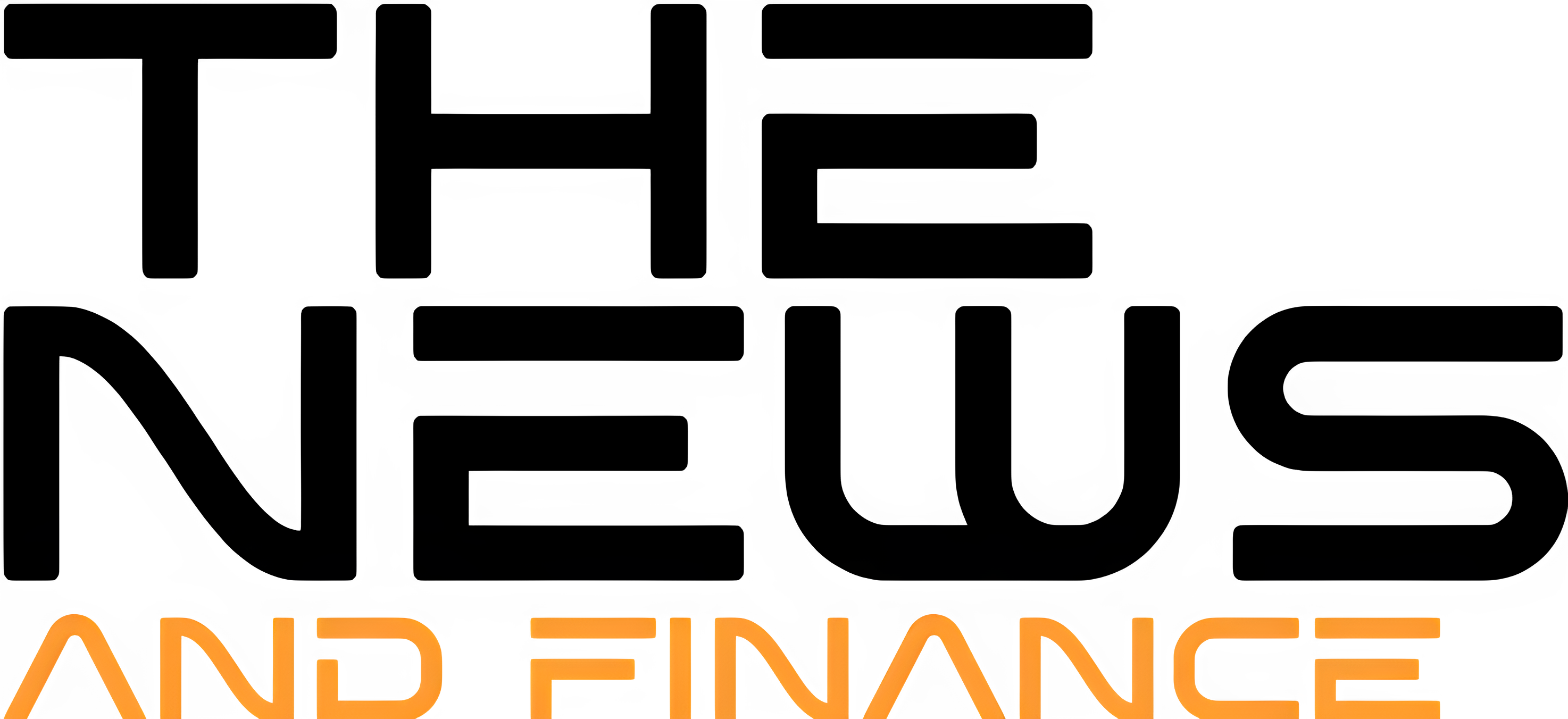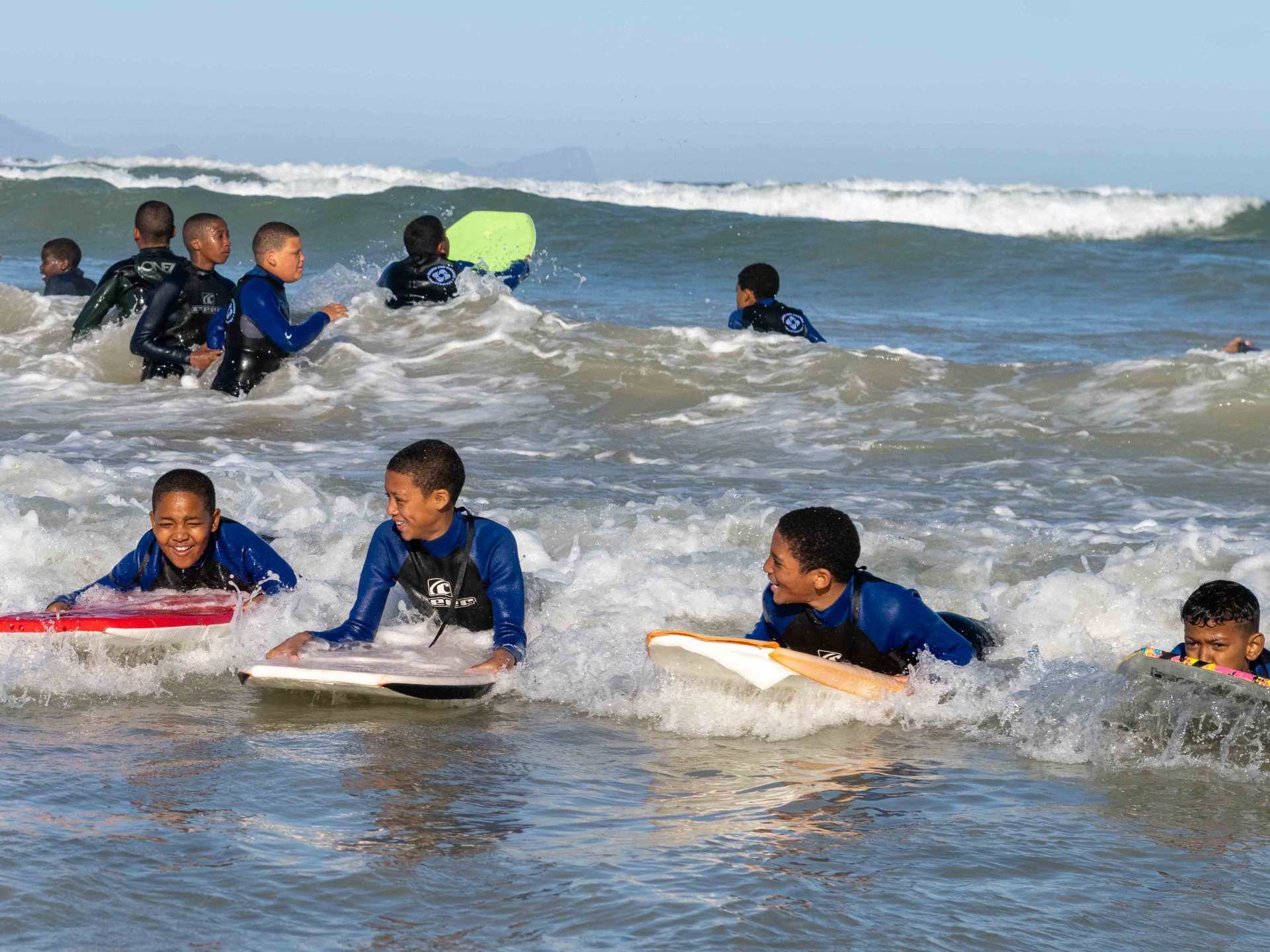Cape City, South Africa – It’s a Monday morning and a dozen youngsters from a college for college kids with autism and associated situations have arrived for his or her weekly surf remedy session.
Shrieking with glee, one lady envelops her coach in a bear hug. Others are much less demonstrative, however the pleasure on their faces is palpable.
After buying and selling their college uniforms for wetsuits, the scholars collect on Cape City’s Muizenberg Seaside. A delicate offshore breeze is blowing, and neat rows of waves stack up invitingly in direction of Cape Level. However earlier than the budding surfers get close to the water, they need to do a land-based psychological well being session.
The day’s lesson, coach Bulelani Zelanga informs Al Jazeera, is named Grateful Take 5.
First, the coaches listing three issues they’re grateful for.
“I’m grateful that I discovered Waves for Change,” Zelanga says. “I’m grateful for my assist community. And I’m grateful that I’m nonetheless respiration.”
Subsequent the youngsters are taken via a sequence of respiration workout routines and inspired to think about issues they’re grateful for. There’s no stress to share these with the group, however a number of courageous souls put up their fingers.
“I’m grateful for my coaches,” one says. “I’m grateful for my mother and father,” says one other.
After about 20 minutes on the seashore, it’s time to get into the ocean. A lot of the members are content material with splashing round within the waves – lots of them can’t swim – however a number of attempt their hand at bodyboarding.
Whereas they play, the coaches are readily available to reassure them – and to encourage them to make use of their newly acquired respiration expertise to deal with the unfamiliar setting.
Zelanga says there’s extra precise browsing when the neurotypical youngsters come within the afternoons, however he additionally says this isn’t the purpose: “Remedy comes first, browsing is second.”
And with good motive: Youngsters in South Africa’s townships can ceaselessly expertise traumatic occasions, and there’s a dearth of social staff and psychologists of their communities.
“We aren’t looking for the subsequent Kelly Slater,” Tim Conibear, the 42-year-old founder and CEO of Waves for Change, tells Al Jazeera, referring to the nice United States surfer.
“It’s all about giving youngsters from troublesome backgrounds coping mechanisms and self-regulation methods. Browsing is simply the hook.”
‘Sport supplies a shortcut’
Waves for Change works with youngsters aged 11 to 13 who’re at high-risk of “poisonous stress”, reminiscent of these affected by poverty, disabilities, gang violence, or a scarcity of entry to psychological well being and social companies, They’re referred by a instructor, nurse or social employee.
For the primary eight weeks, the children merely “educate one another to surf” with the assistance of their coaches, Conibear says.
“As soon as we now have this tightknit group who all belief one another, we begin instructing them psychological well being expertise and coping methods,” reminiscent of self-regulation, sharing and conscious respiration.
Youngsters are transported to and from the seashore, and every session ends with a nutritious meal. Children attend one session per week for a 12 months, after which they will go to a casual surf membership on the weekends, which additionally consists of free transport and a meal.
Many youngsters participate in surf membership for 5 – 6 years, Conibear says. From there, they will apply for a job as a Waves for Change coach on a two-year contract. Waves for Change encourages coaches to review additional and helps them to discover a job when their contract expires.
Coaches have gone on to teach at surf resorts in Bali, be a part of the police pressure, develop into fitness center instructors and, after all, work at surf outlets close to their residence seashores.
With 5 websites in South Africa and one in Liberia, Waves for Change now delivers its surf remedy programme to 2,500 youngsters each week. And that is earlier than you issue within the hundreds of kids who profit from the sports activities remedy programmes run by 35 associate establishments in 10 nations.
“We’ve realised that we are able to attain tens of hundreds of individuals all over the world by making our supplies open supply and by serving to sports activities golf equipment of all descriptions to adapt them to swimsuit their actual wants,” Conibear says.
Nevertheless it wasn’t all the time this manner. When Conibear based the programme in 2007, it was simply him, his VW Golf and 4 children from Masiphumelele township.
Conibear, who grew up in the UK, moved to Cape City in 2006 to work on a vineyard after which received a job with a browsing journey firm.
“Once I arrived in South Africa from the UK, the inequality was simply so stark. … I wished to become involved in the neighborhood,” he remembers. “I assumed: ‘I get lots out browsing, and I’m certain they are going to too.’ Easy as that.”
So he put the phrase out. On the primary weekend, there have been 4 individuals ready to be picked up. In week two, there have been eight. Quickly Conibear had changed his Golf with a Kombi and was spending his Saturdays ferrying as much as 50 youngsters between Masiphumelele and Muizenberg.
Two of these first 4 surfers – Apish Tshetsha and Bongani Ndlovu – turned Waves for Change’s first coaches.
“We’d log on and perhaps have a sizzling chocolate afterwards,” Conibear recollects. “I observed that the children had fashioned bonds with the coaches. I don’t communicate isiXhosa, however I might see it was a mentoring state of affairs.”
For the primary few years, Conibear, Tshetsha and Ndlovu ran the programme on a volunteer foundation on weekends solely.
Issues modified in 2010 when the FIFA World Cup, hosted by South Africa, introduced a number of funding alternatives into the sports-for-development sphere – together with 10,000 kilos ($12,600) from a British firm and 100,000 rand ($5,350) a 12 months from the Laureus Sport for Good Basis.
“At first I used to be a bit shocked,” Conibear laughs. “I didn’t have a clue how we’d spend the cash.”
However he shortly realised that bringing Tsetsha and Ndlovu on as salaried staff and working the programme on weekdays would allow him to achieve way more youngsters.

Because the programme grew and the crew realised it was about way over instructing youngsters to surf, Conibear began bringing researchers on board – reminiscent of Andy Dawes, an utilized developmental psychologist – to refine the programme.
“The basic idea of any therapeutic intervention is giving individuals the chance to speak and be listened to,” Conibear says. “The explanation we use browsing is that we are able to do plenty of rapport constructing in a non-verbal manner. In discuss remedy, you have to be very expert to construct a relationship. Sport supplies a shortcut.”
Jamie Marshall, a analysis fellow at Edinburgh Napier College who has carried out intensive analysis into surf remedy programmes all over the world, is impressed by what Conibear and the Waves for Change crew have achieved.
“Tim doesn’t have a psychological well being background. However the entire crew has been open to evaluating, studying and refining at each step, they usually all the time hearken to the consultants,” Marshall says.
A latest research of US navy service members with despair offered essentially the most compelling proof but that surf remedy actually does work. “Research findings confirmed improved anxiousness, unfavorable have an effect on, psychological resilience and social functioning following program participation,” it decided.
Surf remedy is a really efficient software, however you have to get the basics proper, Marshall says, particularly harnessing the respite that browsing presents from every day life, rigorously curating a secure house and embracing dynamic studying environments.
“Waves For Change ticks all three packing containers,” he says. “Getting a bodily and emotional secure house proper is a big problem. … With this sort of younger individual, if the house isn’t secure. they are going to see proper via it. When you don’t do the laborious work, the programme gained’t work.”

‘It gave me a goal’
The programme nonetheless faces challenges, notably with funding and discovering the precise individuals to manage it.
One other indicator of the programme’s success is the excessive variety of college students who go on to develop into coaches at Waves for Change, Marshall says.
Working example is Zelanga, who was referred to Waves For Change in 2011, when he was 9 years previous.
“I joined Waves For Change with out understanding that they had been instructing us these coping expertise,” he says. “I assumed I used to be simply studying to surf.”
Becoming a member of the programme helped him to “select the precise associates”, he says. Earlier than becoming a member of Waves for Change, he says he was naughty and was each a bully and was bullied.
“A few of my associates from again then are thieves now. 4 of them have handed away. Stabbed, all of them.”
Now, he says, he’s discovered to manage his feelings.
“You’ll be able to say dangerous issues to my face, and I’ll simply have a look at you. I gained’t do something,” he says.
Waves For Change has additionally given him a goal. Since turning into a coach, he’s taken half within the Laureus Youth Empowerment By Sport programme, been nominated by the provincial authorities for a Teaching Excellence Award and accomplished a diploma in sports activities administration.
Subsequent 12 months, he plans to do one other diploma – in sports activities administration – and after that, he’s hoping to open his personal surf academy.
“I’ve been chatting with some college students, and I need to begin one thing for 15-, 16-, 17-year-olds,” he says. “… They want path, they usually’re too previous for Waves for Change.”
Who wants Kelly Slater while you’re producing individuals like Bulelani Zelanga?









